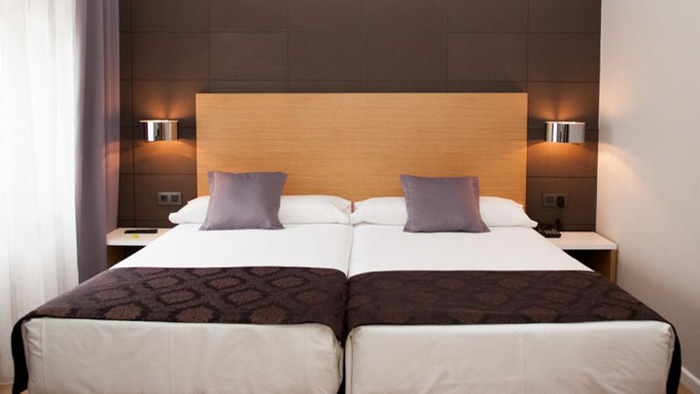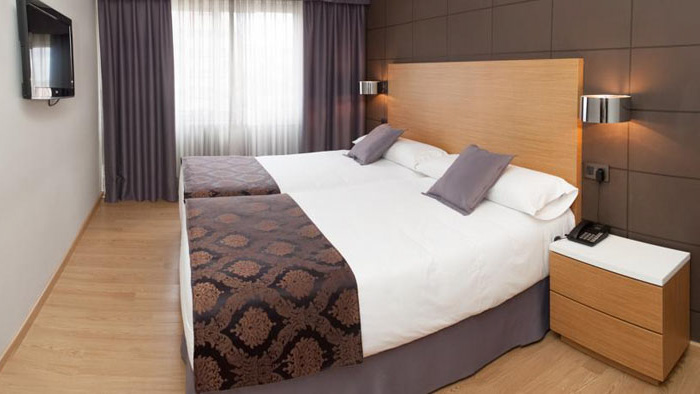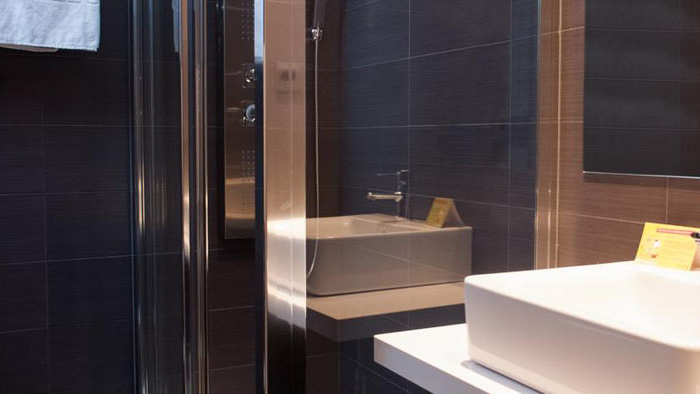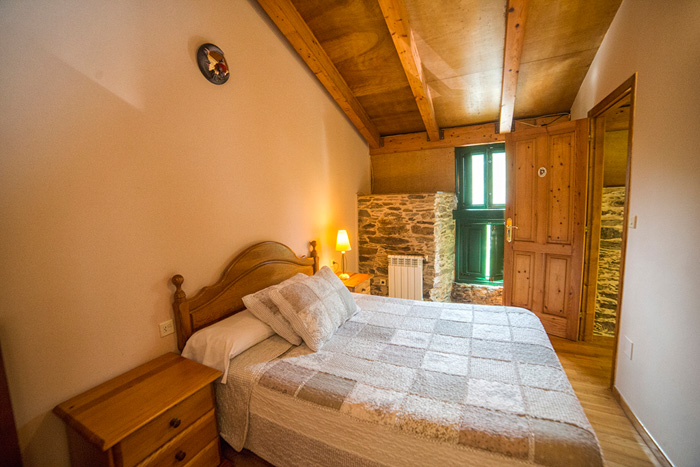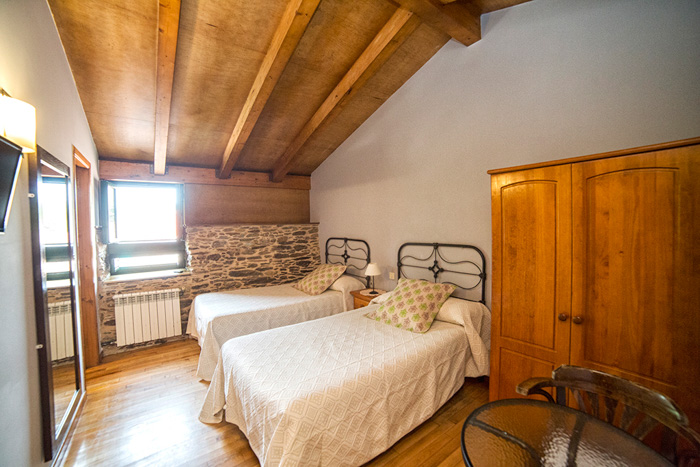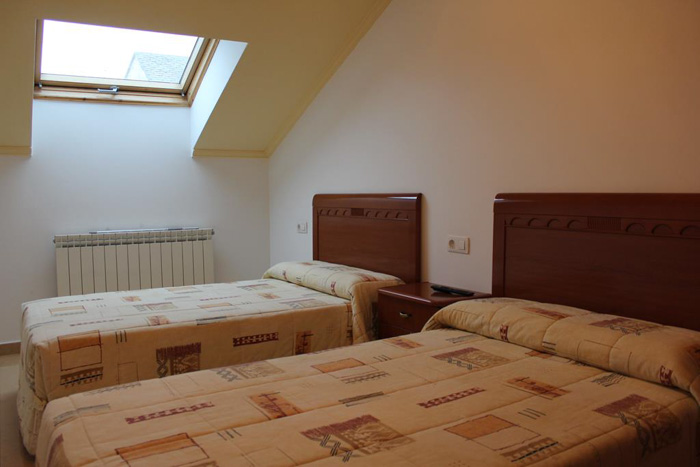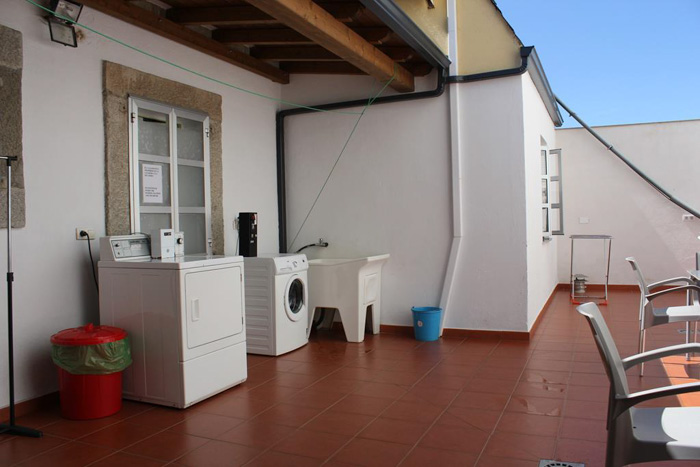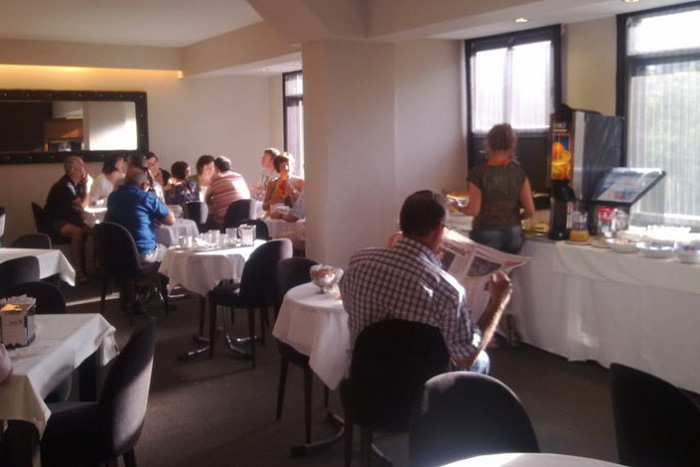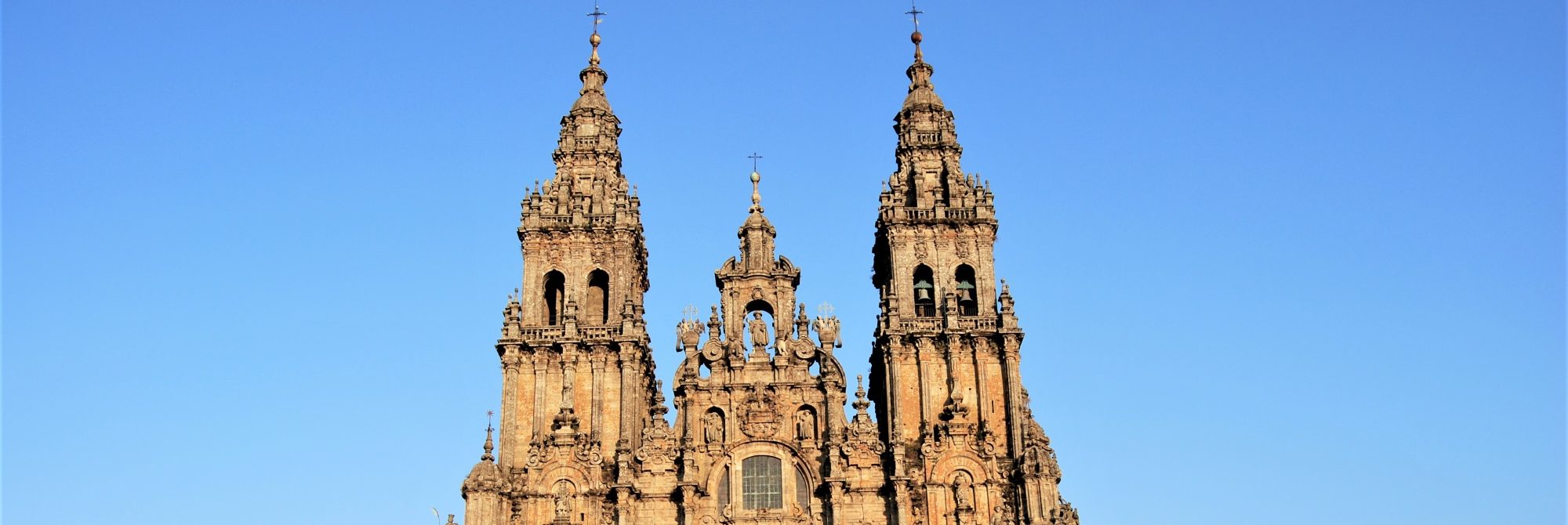
Frequently Asked Questions
Pilgino FAQ
As you plan your Camino de Santiago, you will have questions about this or that aspect pertaining to the journey. In fact, it would be strange if you did not. Over teh course of the many years of helping pilgrims make their Camino dream come true, we have been asked thousands of questions, and we have put together this list (revised and updated frequently) in order to address the most frequently asked ones. The questions are put together under the respective categories. Please peruse the list – it is likely that you will find yours answered, or that you will get an answer to a question you didn’t know you had! If you have a question that you haven’t seen addressed here, or if an additional / follow-up question has popped up, please drop us a line (use the Contact Form at the bottom of the page).
There are naïve questions, tedious questions, ill-phrased questions… But every question is a cry to understand the world. There is no such thing as a dumb question.
FAQ about the Camino de Santiago
FAQ about Pilgino Self-Guided Tours
FAQ about Pilgino Group Tours
FAQ About Food along the Camino
Examples of Pilgino Camino Lodging
FAQ about the Camino de Santiago Pilgrimage
Is there only one Way of St. James?
“There is always the Way of St. James that you are walking!” Or: “The Camino is where You are!” So, at least, go some of the many Camino sayings. In reality, the Way of St. James is a network of many paths across Europe that lead to the tomb of Apostle James in Santiago de Compostela.
Usually, when people today talk about the Way of St. James, they are referring to the classic, most popular and most iconic route in Spain – the Camino Francés. However, in the medieval times, pilgrims would leave their homes and walk to Santiago the shortest, fastest and safest way possible. By way of example, pilgrims from Portugal would have had neither need, nor reason to go on the French Camino as they could easily walk straight up North to Santiago.
Monasteries and churches took note and kept record of the pilgrims to Santiago that would pass and stop, and it is thanks to those documents that we are able to retrace and reconstruct the traditional and historic Roads to Santiago.
Visit our Camino Routes page to find out more about the different Caminos to Santiago!
Is there only one Way of St. James?
“There is always the Way of St. James that you are walking!” Or: “The Camino is where You are!” So, at least, go some of the many Camino sayings. In reality, the Way of St. James is a network of many paths across Europe that lead to the tomb of Apostle James in Santiago de Compostela.
Usually, when people today talk about the Way of St. James, they are referring to the classic, most popular and most iconic route in Spain – the Camino Francés. However, in the medieval times, pilgrims would leave their homes and walk to Santiago the shortest, fastest and safest way possible. By way of example, pilgrims from Portugal would have had neither need, nor reason to go on the French Camino as they could easily walk straight up North to Santiago.
Monasteries and churches took note and kept record of the pilgrims to Santiago that would pass and stop, and it is thanks to those documents that we are able to retrace and reconstruct the traditional and historic Roads to Santiago.
Visit our Camino Routes page to find out more about the different Caminos to Santiago!
What Is So Special about a Pilgrimage
The Pilgrimage alone or in a group through the beautiful nature and past the stunning masterpieces of human design along the Way of St. James is usually a very impactful experience. However, you should also be prepared for the fact that pilgrimage is not always only beautiful, but it can also sometimes be “painful”. For example, almost every pilgrim at some point experiences problems with feet – “just” soreness and fatigue, blisters, tendon inflammation, etc. In such situations, we are challenged to persevere. A large number of pilgrims say after their Camino that it was precisely the pain – and overcoming it, and the pride of the accomplishment – that made the Way of St. James such an impactful, significant, even transformational experience. However, if one finds themselves in a situation where one just can’t go any further, it is instrumental not to be afraid to acknowledge this limitation and, if necessary, to take the opportunity to skip day’s stage partially or entirely by taking a cab or a bus.
Much of what applies to the physical condition can also be applied to the state of our minds. In the silence of the pilgrimage, many things break loose that had been bottled up and waiting for that moment for a long time. This also sometimes hurts, and it takes time to “go through”. Don’t worry too much about unexpected mood swings and unpleasant feelings – there is no better way than experiencing it all while doing the most natural thing for humans – walking: being on your own feet, going your own pace, and bringing your body and soul into harmony.
Where Does the Pilgrimage Tradition Originate from?
Pilgrimage exists in each of the major world religions. The origins of the Camino de Santiago are rooted deeply within the Catholic tradition; however, today it is a destination to all seekers of good will, from all over the world, from all walks of life, and for people of faith or no faith they can name. To walk the Camino de Santiago means to walk a part of one’s own way of life. Therefore, the Camino de Santiago is a profound, sometimes transformational experience that is available to anyone and everyone, and it unfolds and shapes its own, unique meaning for each one of us even as we walk. One thing is certain, pilgrimage goes beyond walking.
Is a Pilgrimage a Spiritual Experience?
Many pilgrims today no longer have religious commitments; rather, they are often driven by something like a spiritual quest, sometimes nested within the larger scope of the journey of self-discovery. Pilgrimage always means an encounter with oneself as well as the question of the transcendent, the search of the “greater”. For many pilgrims, the questions of deeper meanings and purposes – of selves, of life – arise or re-surface during the pilgrimage. From this point of view, for the vast majority of pilgrims, the pilgrimage – or the setting out on a pilgrimage path – also means walking a spiritual path.
Why Go on a Pilgrimage?
To walk the Camino de Santiago is to walk a part of one’s own life’s journey. We go into the distance, discover new and unknown things and yet find ourselves in the end. Hardly any pilgrim would argue with the statement H. Kerkeling makes in his Camino book, that everyone cries on the Camino at some point. The encounter with oneself, the sometimes suddenly felt closeness to one’s own self, to one’s own life, perhaps only knows the answer of tears. And in the rarest of cases, these tears can be clearly attributed either to sadness or joy – usually, it’s a mix, a kaleidoscope as complex as we ourselves are.
Encounter on the Camino also means encounter with other people: the “annoying fellow pilgrim” from your own group, an incredibly enriching conversation with a “pilgrim sister” or the feeling of a “united world” in the encounter with pilgrims of all possible nationalities – all these are gifts on the Camino. And last but not least, for many, the Way of Saint James is also an encounter with the divine. Like the other encounters, this one is not “doable”, often completely surprising and sometimes disturbing; but always enriching. The Camino de Santiago, the thousand-year-old pilgrimage route to the tomb of the Apostle James, invites people to the adventure of these encounters. Let yourself be inspired – and inspire yourself!
Do You Have to Be Religious to Go on a Pilgrimage?
The answer is: No. The Camino de Santiago is clearly Catholic in its origin. Already in the past and especially in our modern times, people with and without religion, Christians and non-Christians, believers and non-believers set out on the Camino de Santiago in search of a bigger purpose, of selves and of the divine. The Compostela – the certificate of completion that you receive in Santiago de Compostela after successfully completing your pilgrimage – bears beautiful, meaningful value even for non-Christians. Many pilgrims – Christians and non-Christians alike – also like to continue on to Finisterre – the End of the World as it was believed to be by the Celts.
FAQ about Pilgino Self-Guided Tours
Are flights included in my Self-Guided Tour?
We offer our pilgrimages without flights. You have the possibility to plan your journey flexibly, to choose cheap flights and to fly from the airport of your choice. The journey by plane to the destination airport is therefore self-directed. We will be happy to assist you with infor-mation and advice when booking your flight.
The transport from the airport to the Way of St. James and back is also on your own. However, we can offer you to organize a cab transport or to help you with the planning of the start and end point of your pilgrimage.
The travel cancellation insurance you should obtain for the booked trip also applies to your flights if you increase the sum insured accordingly by the airfare.
How are Self-Guided tours different from Group Tours?
Our self-guided tours are ideal for people who wish to embark on an individual Camino adventure, or who want to share it with their partner or family member(s) or friend(s). Over the last years, approx. 70 % of our self-guided tours have been booked by groups of 2 (whether or not they booked and shared a double-room, or opted for single rooms). Approx. 25 % of our self-guided tours have been booked by solo travelers, and about 5 % – by groups of 3 or more people. On our Self-guided Tours we take care of booking selected accommodation and transporting your luggage. So you can concentrate on running! We will send you your information in digital form before you set off. Otherwise you run alone or with your fellow traveler, without any other group members or tour guide.
Can I have you create a personalized trip for me?
Yes! And that’s free of charge. Please contact us (you can fill in our Contact Form below).
Can I walk with my own group?
Yes! We offer team trips where several people can run together as their own group and not have to worry about the luggage and accommodations. This falls under individual trips and can be arranged according to the group’s wishes, with pre-booked accommodation as standard, and luggage transport, breakfast and/or private transfer from the airport as optional add-ons. Whether family groups, groups of friends, work groups, former classmates, hobby groups or hiking clubs and living communities – we have already sent many great groups on the Way of St. James. We will gladly put together individual offers for you free of charge. Just give us a call or send us an e-mail.
Are flights included in my Self-Guided Tour?
We offer our pilgrimages without flights. You have the possibility to plan your journey flexibly, to choose cheap flights and to fly from the airport of your choice. The journey by plane to the destination airport is therefore self-directed. We will be happy to assist you with infor-mation and advice when booking your flight.
The transport from the airport to the Way of St. James and back is also on your own. However, we can offer you to organize a cab transport or to help you with the planning of the start and end point of your pilgrimage.
The travel cancellation insurance you should obtain for the booked trip also applies to your flights if you increase the sum insured accordingly by the airfare.
Who takes care of the luggage transport for the Self-Guided Tours?
We work with an experienced local transportation company that will take your luggage from one accommodation to the next every day.
What kind of accomodations can I expect on my Self-Guided Tour?
We have built a long lasting partnership network in Spain, France and Portugal to provide the best accommodations for our clients. Over the many years of experience we have come to know what our clients wish and expect, and we have that in mind as we inspect and select the lodging choices that we offer.
During the pilgrimage you will be accommodated in guesthouses, hostels (smaller hotels) and hotels. There is also accommodation in casas rurales (B&Bs): these are usually old farms or other former agricultural buildings, which are very nicely decorated and furnished with attention to detail. The rooms in the guesthouses and hostels are usually simply furnished, but always sufficient for the demands of the pilgrims. Usually the rooms have their own bathroom and toilet, but exceptions are possible. For example, in some casas rurales there are bathrooms in the hallway or the need to share a bathroom with another room, but there are always enough bathrooms.
The accommodation is as booked in double or single rooms. Our lodgings are mostly smaller establishments and often family run. They are almost always located at the respective stage destination, often even directly on the Way of St. James. We prefer friendly accommodations, which also allow an uncomplicated access to the country and its people.
One more remark about the bathrooms in Spain and Portugal: We pay a lot of attention to cleanliness, especially in the sanitary area. In terms of sanitary technology, however, the southern European countries have not yet reached the German standard. Even better hotels sometimes have sanitary facilities that do not always correspond to the conditions in Germany due to poor construction.
What are my options for accommodation on my Self-Guided Tour?
Accommodation for solo travelers is in single rooms. Those traveling together – whether couples or other family or friends – have the choice of being booked into two single rooms, or staying in double rooms. Accommodation in triple or quadruple rooms – e.g., for larger groups of family or friends – may also be possible upon request.
Can I have luxury accommodation on my Self-Guided Tour?
While the comforts can and even should be expected by booking private accommodation as opposed to spending nights in pilgrim shelters and hostels, we believe that the Pilgrimage – by its very virtue – isn’t really about luxury. (Read more about Our Philosophy) Walking every day, even modest distances, is a physical exertion, and making do only with what little you brought along is, in and of itself, a form of a sacrifice. People who embark on the Camino forego some comforts and luxuries, so to speak, by default, and they do so willingly by going on the Camino as opposed to spending the same time in a luxurious spa resort, cruise ship or special destination. In addition, the Camino gives us a marvellous opportunity to learn to appreciate things which we do not know nor expect, and when they come – like a perfect backyard with lawn chairs on a lovely afternoon, or a fireplace on a rainy day in the dining room of the B&B – it lifts and lightens our hearts! However, when we arrive in Santiago – and our pilgrimage and that challenge that comes with it is complete – then it’s time to celebrate, to enjoy, to treat ourselves to pleasant extras and to reward ourselves for completing the quest. That’s the reason why a fair number of our clients opt for 5-Star lodging in Santiago. Here, our “standard” is quoted by default (it would be like your accommodation without luxurious extras during the Camino), bet we can quote you “more luxurious” as well as 5-Star (top quality and luxury) instead – just let us know at the time of registering / booking.
Similarly, “More luxurious” and even “5 Star” accommodation may also be available in big cities along the Camino – for example, Pamplona, Logroño, Burgos, León, Ponferrada on the French Way – and, occasionally, our pilgrims add an extra night in these places to “spoil themselves with an extra day of rest, and they then request “more luxurious” or “5 Star” lodging.
Is there catering for Self-Guided Tours?
As a rule, we do not book meals for individual travelers and groups traveling independently, unless this is explicitly requested (exception France because of the difficult catering possibilities). So you can decide for yourself where and what you want to eat for breakfast and dinner. Especially on days when it threatens to be very hot, many pilgrims want to leave very early and then have breakfast on the way (in the accommodations there may be no breakfast so early). However, if you want to have breakfast or dinner at the accommodation, this is of course possible if the accommodation offers it. You simply pay for dinner or breakfast on the spot. In your PILGINO INDIVIDUAL – info folder you will find a list of possible restaurants/cafés (tested by the Pilgino team) in the respective places of accommodation.
Can I book a Self-Guided Tour, e.g., with breakfast only?
Yes, of course. Often this is not desired, because breakfast in the accommodations is usually served only from 8h in the morning, and many want to get an early start.
How far are the hiking routes during the day?
The distances for each walking day as well as the average walking distance for your Camino are listed in the Itinerary for your convenience, to help you plan the day accordingly. Normally, the walking distances for most days on our Regular Pace tours range between 20 and 25 km. (12.4 and 15.5 mi.). According to our experience, this is a pilgrimage distance that does not cause major problems with knee joints or feet, even numerous, continuous days of walking.
We highly recommend getting a detailed Camino Guide Book, where you can find up-to-date information about cafes and rest areas along the way, all the points of interest, information about terrain profiles, and much more.
The day’s destination is usually reached around afternoon and after showering and a short rest you can, for example, explore the city.
Daily distances of 30 km. (18.6 mi.), even up to 40 km. (25 mi.) are not uncommon for some pilgrims, but one risks being “put out of action” by one’s own body.
Is a pilgrimage exhausting?
Pilgrimage alone or in a group through the often beautiful nature on the Way of St. James is usually a very impressive experience. However, you should also be prepared for the fact that pilgrimage is not always just beautiful, but also sometimes “hurts”. For example, almost every pilgrim has once more or less big problems with the feet. In such situations, perseverance is often required. Many pilgrims say afterwards that just the pain and its overcoming and the pride in it was an important and good experience on the Way of St. James. However, if you find yourself in a situation where “you just can’t go any further”, don’t be afraid to acknowledge this limit and, if necessary, take the opportunity to skip a stage by cab or bus.
Much that applies to the physical condition can also be referred to the mental condition. In the silence of pilgrimage, many things break open that have been waiting for this moment of peace at home for a long time. This sometimes hurts and takes time to “go through”. Don’t worry too much about unwelcome moods and feelings – there is nothing better than being on your own feet at your own pace to bring body and soul back into harmony.
What is the Pilgrims ID?
The Pilgrim’s identity card (Spanish: la Credencial) is carried by pilgrims on the Way of St. James to certify their pilgrimage. During your walking days, you will receive stamps in your Credencial – at your accommodation, at any café on the Way, etc. 2 stamps per day are necessary during the last 100 km. before Santiago. At the end of the pilgrimage in Santiago de Compostela, a pilgrim’s certificate (la Compostela) will be issued to them upon presentation of the ID card at the Pilgrims’ Office.
Depending on where you start your Camino, we will inform you about the nearest location where you can obtain your Credencial. In addition, many countries have registered Camino / Pilgrims’ Associations, and it may be possible to obtain a Credencial through such Association in your home country. If you need help locating such Association in your country, please ask us!
Do I get travel documents from Pilgino?
Upon receipt of your final payment due, and approx. 2 weeks before the start of your journey, you will receive the Pilgino Self-Guided Digital File containing all the relevant information for and about you pilgrimage. It does not replace the purchase of a pilgrim guide. In addition to stories and legends about the Way of St. James, you will also find directions to your accommodations as well as a small phrasebook.
Do I need an insurance?
All travellers must see to it that they have medical insurance coverage. In addition, we strongly recommend to all our travellers to get a Travel / Cancellation Insurance coverage. Because different countries have different restrictions, we recommend that you look for such coverage in your home country.
How do I pay for my Self-Guided Tour?
After your registration and the receipt of the booking confirmation sent by us, please transfer the deposit for your trip in the amount of 20% of the total trip price. The remainder of the tour price must be paid at least three weeks before the start of the tour.
Currently, the payment form we accept is a funds transfer to our bank account. Our full bank / account information will be provided to you along with our Booking Confirmation / Invoice.
We are aware of the fact that wire transfers from outside Europe may incur transfer fees, assessed both by the sending bank and by the receiving bank.
IMPORTANT: when making your transfer, please make sure to bill ALL bank charges to your account; otherwise, the receiving bank will bill their charges to the amount transferred which, in turn, will lead to discrepancies between amounts due and amounts received.
In order to avoid high bank charges for wire transfers, you may look for alternative money transfer options such as, for example, WiseTransfer (www.wise.com). They are known to offer most up-to-date currency exchange rates, charge very low service fees, offer the sender various options for where the amount is billed to (your bank account, credit card, etc.) and, most importantly, the option of setting the exact amount to be posted to the receiving bank account (our invoice amount due, in euros). Practice of working with many international clients shows that comparing the conditions offered by such service providers to the conditions of the regular, bank-to-bank wire transfer options, may certainly be worth considering.
Can I take my child with me?
Of course! Please consult with us personally, preferably by phone or just send an email. Questions we will ask you for sure are: How old are the children? Do you (and your children) have any experience with this?
Can I take my dog with me on Pilgino tour?
No, unfortunately it is not possible at the moment. But, we are working on selected routes to offer this option in the future.
What is the difference between Regular Pace, Fast Track and Slow Steps?
Generally, our Self-Guided Tours come with three options, which are based on the average daily walking distance:
Regular Pace: approx. 21.5 km. (13 mi.) / Day
Fast Track: approx. 26.5 km. (16.5 mi.) / Day
Slow Steps: 15.5 km. (9.6 mi.) / Day
As a general rule, our Regular Pace tours are suited for adults with an average level of physical fitness, no significant issues or pre-conditions that would impede continuous, daily walking and, ideally, a little bit of experience walking, hiking or other outdoor activities. The walking days on these tours comprise approx. 5 hrs. of net walking time. Making use of the Luggage Transfer add-on option makes significant difference in weight to be carried. If you do plan to carry your backpack, some previous experience of walking with it, as well as some careful planning of its contents and the total weight, are a must!
If you feel the desire to take more time to enjoy the walk and the places the Camino traverses, or if you have reason to believe that 20 km. (12.5 mi.) per day of continuous walking will be too much for your body, the we recommend looking into the Slow Steps options, as their average daily distances are significantly lower.
Fast Track tours cover the same stretches of the given Camino, but in less time: the average distances are significantly longer here than on the Regular Pace tours. Generally, Fast Track options start out with shorter distances in the first few days, and then the pace increases. The reason behind this is that our bodies need to adjust to the challenge of the daily walking, and we also need to adjust to the whole “Camino routine” – developing and managing our daily rhythm is instrumental. Because of longer distances, our Fast Track tours should be considered only by those with above-average level of physical fitness and previous experience with long-distance hiking, running and / or walking. To word it differently, this tour option is for those who know their body very well and are certain that it will be able to cope with the challenge.
Please keep in mind that the numbers above are the average numbers: some days on, say, Regular Pace Itinerary may have 24 km. (15 mi.) while others – only 16 km. (10 mi.), etc., but we do make an effort to keep the day’s distance as close to the tour’s average as possible. The fact that the stages have various lengths has to do with the lengths of the stretches that run in the nature, with the degree of terrain difficulty on the given day, and with the availability of (quality) lodging in a given place. Each of our Tour Description pages on our website has a section titled “Itinerary”, and we strongly recommend that you take a close look at all day-by-day descriptions that include specific distances as well as expected levels of physical difficulty.
If you have doubts as to which option is right for you – drop us a line or give us a call and our Camino Experts will be happy to help you with guidance and advice!
FAQ about Pilgino Group Tours
Are flights included in my Group Tour?
Our tours do not include flights. This leaves you free to organize your stay to your liking, to choose your place of departure and find the most economic flight. We provide a pick-up-service from the closest international airport. The airport for each tour can be found in the respective itinerary.
The exceptions are our tours in Portugal: on these tours, we first meet at the location of the first night’s accommodation, and the transfer there from the airport must be organised independently. We will provide you with all necessary information prior to the tour.
The specific time which airport pick-up can be provided, will be announced with the information for each trip. The group meets the tour-guide at the airport. Transport to the first accommodation is usually conducted by minibus. If you prefer, the first night’s accommodation can also be reached independently.
We would be happy to help you find the best flights and provide you with any information regarding the booking process.
We provide a drop-off service to the airport for tours that end along the Camino. For all tours which have Santiago or Fisterra as their final destination, the transport to the airport is to be organised independently. We will be happy to help you organise transport by bus or taxi.
All exceptions and important information can be found in the program of each tour.
If you want to extend your visit in Spain or Portugal to explore fascinating cities like Santiago, Porto or Bilbao, please let us know beforehand. We will gladly book accommodation for you.
What is the concept of Pilgino Group Tours?
Our groups usually consist of 8 to 16 people. This group size makes it easy to get know each other quickly and stay in smaller pensions and hotels. The age of the participants ranges between 40 and 80 years.
During the pilgrimage, all participants should be able to walk at their own pace. No one should feel compelled to walk faster or slower if they are not comfortable with it. This also means the group does not stay together the whole day. Sometimes individuals or groups who have the same pace agree to walk parts of the route together. Often, however, pilgrims personally decide to walk alone a part or the whole route. Since the Camino is very well signposted, there is almost no danger of getting lost. During the day, the group (or part of it) usually meets in the open air or in a bar during a break.
Although we travel as a group, each participant also “goes his own way.” The other people in the group can be both an enrichment and a joy, but sometimes also a burden. May we succeed in finding the right balance between proximity and distance!
Are flights included in my Group Tour?
Pilgino offers pilgrimage tours without flight reservations. You have therefore the possibility to plan your journey flexibly, choose inexpensive flights, and depart from your preferred airport. Arrival to the agreed destination airport is done independently. This means the group does not travel together, but meets in Spain at the airport, in the city center in Porto (Tour Portugal), or in Santiago (Tour Fisterra), where you meet the tour guide. We would gladly assist you with information and advice regarding flight reservations.
For each of our pilgrimage tours, we generally offer a transfer from the closest airport to the Camino (Way of Saint James) and back. The airport of each tour can be found in the respective itinerary.
Exception: If the tour ends in Santiago de Compostela, you will have to proceed to the airport independently on the day of departure. For tours in Portugal with starting point in Porto, you will also have to proceed, on the day of arrival, independently from the airport to the hotel.
Transfers are usually done with our own minibuses or, in exceptional cases, with a public bus. We will provide you with an appropriate time to pick you up at the airport. If you want to arrive at a different time or at a different airport, you can also proceed indedendently to the starting point of the pilgrimage.
You have the option to extend your stay in Spain and Portugal. If you would like, for instance, to stay a few days longer in Santiago or Porto, or visit the beautiful city of Bilbao where the Guggenheim Museum is located, contact us as early as possible. We would gladly book an appropriate accommodation for you at additional cost (without meals and tour guide).
You will receive from us information about your respective hotel and the additional invoice by email around two to three weeks before the start of the trip.
Is the Group Tour accompanied by a travel guide?
You will meet your tour guide at the agreed airport in Spain. In Portugal and for the Tour Fisterra, you will meet at the agreed location in the city center or at the hotel. The travel guide is responsible for the luggage transfer, translations, preparation of the accommodations, and all arising organizational issues.
On pilgrimage days, participants walk without the tour guide. Since the Camino is well signposted, there is no danger of getting lost. Participants decide on their own if they want to walk alone or in small groups. During the day, the tour guide remains reachable by phone in case of any problems.
Who takes care of the luggage transport for the Group Tours?
There is an assistance vehicle normally operated by the tour guide and used to transport the luggage. If necessary, it can also be used to accommodate pil-grims who have to take a break for health reasons, for example. There are, however, not enough seats to accommodate the entire group in case of rain, for instance.
What kind of accomodations can I expect on my Group Tour?
We have built a long lasting partnership network in Spain, France and Portugal to provide the best accommodations for our clients. Over the many years of experience we have come to know what our clients wish and expect, and we have that in mind as we inspect and select the lodging choices that we offer.
During the pilgrimage, participants are accommodated in pensions (guesthouses), hostales (Spanish word for small hotels), and hotels. There is also accommodation in casas rurales (country houses or B&Bs). These are usually old farms or other former agricultural buildings, often very nicely furnish, with attention to detail. The rooms in the guesthouses and hostales are usually simple furnished, but always equipped with everything a pilgrim needs.
Normally, the rooms have their own bathroom with WC, but exceptions are possible. For example, in some casas rurales there are bathrooms in the hallway. And while in some casas it might be required to share a bathroom with another room, there are always enough available.
Our accommodations are mostly small and often run by local families. They are almost always located at the respective stage destination, often even directly on the Way of Saint James.
We prefer accommodations with a familiar environment that give you an authentic insight into the country and its people. In some cases, a group can also be accommodated in several smaller houses.
The accommodations are booked in double rooms. For people who register alone and book a half double room, we apply, where appropriate, a surcharge we call “half double room.” If there is no other person of the same gender for the second spot in the double room, the person in question gets a single room and we apply the above-mentioned surcharge. If a second person registers for the double room, this surcharge no longer applies. The number of single rooms available for each trip is limited. We apply a surcharge for single rooms. Upon request, accommodation in three or fourbed rooms (for families) may also be possible.
A final, small note regarding sanitary facilities in Spain and Portugal: While we have taken great care to select friendly and clean guesthouses, the construction of sanitary facilities in some southern European countries can be found wanting at times. Be prepared to encounter facilities—although clean—that might not always meet the high standards you are used to at home.
What are my options for accommodation on my Group Tour?
Accommodation for solo travelers is in single rooms. Those traveling together – whether couples or other family or friends – have the choice of being booked into two single rooms, or staying in double rooms. Accommodation in triple or quadruple rooms – e.g., for larger groups of family or friends – may also be possible upon request.
Is there catering for Group Tours?
During the pilgrimages, you will usually have half board. In the morning, there is a southern breakfast (for example, coffee with milk and toasts with butter and jam). In the evening, we go together to a restaurant and have a menu made for pilgrims or simply the menu of the day (drinks like red wine and water are usually included in Spain and Portugal).
During the hike, everyone is responsible for their own meals. Pilgrims often eat a bocadillo (Spanish bread or baguette topped with various delicious ingredients) or another snack in one of the many small bars or restaurants. Since you walk in smaller groups or alone during the day, this can be flexibly arranged by the participants themselves. Dinner will take place mostly in smaller restaurants and village bars, so you will get to know a great deal of the way of life and customs (beyond the paella clichés).
Meals on our pilgrimages usually start with dinner on the day of arrival and end with breakfast on the day of departure. Please, note: Meals on rest days in Burgos (Tour 2), León (Tour 3) and Fisterra (Tour 5) are not included in the tour price and are self-organized. Meals for all tours that end in Santiago conclude with dinner on the day of arrival in Santiago. For the Tour Portugal, meals begin with breakfast on the first day of the pilgrimage.
What is the daily schedule on my Group Tour?
Our daily stages are on average between 20 and 25 kilometers/12 and 16 miles. Based on experience, this distance does not cause major problems with knee joints or feet, even after a few days. Daily distances of 30 to 40 kilometers/19 to 25 miles are not uncommon for some pilgrims, but you risk being “put out of service” by your own body.
On our pilgrimages, we offer a short spiritual introduction to the day in the morning before starting on Camino. These are often short texts that stimulate reflection and can be an impulse for the next hours on the Camino. You are cordially invited to take part in these meetings, but naturally, you can also start without them at your own leisure.
The day’s destination is usually reached in the afternoon. After a shower and a short break, you can explore the city. Sometimes, you just sit together and talk about the experiences of the day with a good Spanish coffee or wine. In the evening, there is the common menu for pilgrims.
Going on a pilgrimage alone or in a group through the often-beautiful nature on the Way of Saint James is, for the most part, a very impressive experience. You should also be prepared, however, for the fact that a pilgrimage is not always “only beautiful”; it also “hurts” sometimes. For example, almost every pilgrim has, at some point, big problems with their feet. In such situations, perseverance is often required. Many pilgrims say in hindsight that the pain, its coping, and the pride involved were an important and good experience while on the Camino. Nonetheless, if you find yourself in a situation where “you just can’t carry on”, do not be afraid to acknowledge this. In this case, you can call the assistance vehicle to pick you up.
Most of what applies to the physical condition can also be transferred to the mental one. In the silence of pilgrimage, things that have been waiting for a long time for this moment of peace break open. This is sometimes painful and takes time to “go away.” Do not worry too much about unwelcome moods and feelings. There is nothing better than being on your very own and at your own pace to bring body and soul back into harmony.
Do I get travel documents from Pilgino?
Pilgrims carry with them the pilgrim passport (in Spanish Credencial) on the Camino to certify their pilgrimage. At the end of the journey in Santiago de Compostela, pilgrims are issued a pilgrimage certificate (La Compostela) after presenting the passport at the pilgrim’s office.
At the beginning of your trip, you will receive from the tour guide the passport, together with the pilgrim folder. The pilgrim passports we provide you with are officially issued by the Santiago de Compostela Ca-thedral. We purchase the passports ourselves from the Jakobusverein located in Germany, which runs the pilgrim hostel in Astorga, and thus supports their commitment to pilgrims.
You can certainly order the pilgrim passport from a foreign association.
The pilgrim folder you receive from us is the main part of your travel documents. In addition to the itinerary of your pilgrimage, you will also find information about the accommodations, a small phrasebook, and much more. You will receive the folder from your tour guide on the first day of your trip. However, it does not replace the purchase of a guidebook.
Please, consider the following: The pilgrim folder also contains a list of participants in which the contact details of all the members of a group are published. Should you not agree to the disclosure of your contact details, when registering, indicate your preference in writing on the relevant form.
In addition, the travel documents include a detailed list of items to take with you in preparation for the pilgrimage. This list is available on request or can be found on our website: www.en.pilgino.com.
Do I need an insurance?
Travel insurance is not included in our offerings. We advise you to buy a suitable package.
If you are from a country that is a member state of the European Union, you will have health insurance in Spain and Portugal. If you are from any other country, we advise you to buy international health insurance for the duration of the tour. All payments you make for the tour are insured against company bankruptcy.
How do I pay for my Group Tour?
After your registration and the receipt of the booking confirmation sent by us, please transfer the deposit for your trip in the amount of 20% of the total trip price. The remainder of the tour price must be paid at least three weeks before the start of the tour.
Currently, the payment form we accept is a funds transfer to our bank account. Our full bank / account information will be provided to you along with our Booking Confirmation / Invoice.
We are aware of the fact that wire transfers from outside Europe may incur transfer fees, assessed both by the sending bank and by the receiving bank.
IMPORTANT: when making your transfer, please make sure to bill ALL bank charges to your account; otherwise, the receiving bank will bill their charges to the amount transferred which, in turn, will lead to discrepancies between amounts due and amounts received.
In order to avoid high bank charges for wire transfers, you may look for alternative money transfer options such as, for example, WiseTransfer (www.wise.com). They are known to offer most up-to-date currency exchange rates, charge very low service fees, offer the sender various options for where the amount is billed to (your bank account, credit card, etc.) and, most importantly, the option of setting the exact amount to be posted to the receiving bank account (our invoice amount due, in euros). Practice of working with many international clients shows that comparing the conditions offered by such service providers to the conditions of the regular, bank-to-bank wire transfer options, may certainly be worth considering.
FAQ about Food along the Camino
What are Spanish breakfasts like?
For most Spaniards, breakfast means something light: it’s usually coffee (of excellent quality) and something sweet to go along.
The most common breakfast item are the Tostadas: usually, 2 slices of toasted bread, which thicker and heavier than the common American-style toast, along with sealed little servings of butter, honey and / or jam (marmalade) – usually, peach or strawberry. Some places will have muffins, cake and / or croissants – both butter as well as chocolate. The bigger the hotel / café / bar, the more likely will it be to find alternatives such as sandwiches with cheese or meats (jamón, chorrizo, etc.) or egg omelettes.
As for breakfast drinks, as mentioned before, coffee is amazing no matter where. In most places, it comes served as espresso, cafe solo (still small, but not as strong as espresso) or cafe con leche (with milk).
If you are a tea lover, used to both quality and variety, you will soon notice that rural Spain is not a tea-drinking country, but when you do manage to find excellent teas – usually in bigger cities – you will appreciate them more than ever.
Perhaps as a way to compensate for the lack of wonderful teas, you will find freshly-squeezed, absolutely wonderful orange juice virtually everywhere on the Camino: yes, the Spanish love their o.j.!
And if neither of the above is right for you, you can count on enjoying hot chocolate – also available everywhere, and known in Spain as “Colacao.”
What is the Menú del Peregrino?
The so-called Pilgrim Menus stem from the typical lunch traditions of Spain, known as El Menú del Día – similar, in principal, to what we think of as a Special of the Day, but also very different. The difference lies, mainly, in the larger quantity of choices these Menus comprise. However, while the Menú del Día is offered for lunches only, the Menú del Peregrino is offered all day long, and it (more) often preferred for dinner.
Generally, the Menú del Peregrino will contain a choice of a first course (on average, 5 items to choose from), a choice of a second course (also approx. 5 (other) items to pick one from), and a choice of a desert. In addition, bread and either wine, or water are also included (yes: if you would like both some wine and some water, you’ll be charged a bit extra).
The choices of the first course may consist of a green (mixed) salad, a potato salad known as Ensaladilla Rusa, 1 or 2 choices of soup, pasta (usually, with meat sauce), and / or a Tortilla (potato omelette, not to be confused with a Mexican-style Tortilla).
The choices of the second course often include beef, pork, chicken, fish and – now more often than before – a vegetarian dish.
The desert choices may be as simple as “fresh fruit” – you get an orange, an apple or a banana – or a plastic can of yoghurt, but flan, pudding, cake and / or ice-cream may also be offered.
All of the above comes at a set price, and that price ranges between 10 and 12 euros.
Do I need to leave a tip?
Unlike in the US and other countries, tipping is neither required nor expected. However, if you enjoyed your meal, you may leave a small tip on the table – do not hand to the waitress or waiter as it may be considered impolite.
What can I expect to find to eat for lunch?
For many people in Spain, lunch means a big meal: one eats a lot for lunch, taking the time to do so as well as to have a nap – the legendary siesta – thereafter. Hence, the Menú del Día (cf. next section) is, for many locals, the go-to option. However, for many pilgrims – except for those who like to set out at dawn and arrive at their destination by lunchtime – having lunch happens somewhere in the middle of the walking day. Therefore, while certainly possible, having an over-filling lunch with an X amount of kilometres yet to go may not be the most practical choice.
The most common food pilgrims get for lunch is the bocadillo – a big (if not to say huge) sandwich. It’s made from the Spanish version of baguette bread, which is shorter, but roughly 3 times wider than the typical baguettes in France. The bread gets cut open and filled with a variety of choices, most common being jamón, cheese, and omelette. If you are not a big eater, and once you see how big bocadillos are, you may consider ordering them half-size – medio bocadillo. Or, if you get a full one and cannot finish it, you can pack the rest along and have it later.
Everything above and beyond these basic choices will largely depend on where you are, and it is also possible to find salads and single hot dishes in most places.
I am a vegetarian – will I be able to eat on the Camino?
Spain is, by and large, very much of a meat-eating country, and Galicia is famous for its fresh, diverse fish and seafood. Until recently, vegetarianism was very little heard of in the rural areas of Spain, but nowadays – thanks also to the Camino – some vegetarian options are included on most menus. They will not be nearly as ample as the meat and seafood choices, and more readily and easily available in towns than in villages, but it is nowadays certainly possible to enjoy walking the Camino as a vegetarian.
What if I have food allergies / specific dietary needs?
Depending on how severe the allergies, you will need to make sure to communicate this where you get food – remember that, most of the time, you will be in very rural areas where local establishment owners and employees may not be as knowledgeable about specific complexities of nutrition science. It would be wise to ask a knowledgeable person – preferably, a bilingual doctor – to translate what you may have and what causes it into a brief, simple and straight-forward passage in Spanish before you even come on the Camino, and to be ready to say or present it wherever you go to eat.
If your dietary needs are very specific (e.g., only gluten-free, etc.), it would be best if brought a certain quantity of such items along from home – our luggage transfer option comes especially handy here. You are likely to find the full selection of specific items only in specialized dietary stores in big cities – it may take a bit research work to locate them, and to go there to re-stock.
What about buying groceries?
Stopping at a supermarket (in bigger towns), a local small grocery shop or at an open-air market (if you pass one) and getting some food is an absolutely great idea: the countryside the Camino traverses is not only pleasing to the eye, but also inviting to sit, relax and enjoy a picnic, and the only obvious minor inconvenience to consider here having to carry the produce. Similarly, local stores and supermarkets are a great resource for those whose bodies are used to numerous, frequent snacks (as opposed to few but large meals).
Examples of Pilgino Camino Lodging
The desire to have an idea as to what the rooms in your Camino accommodation might look like is completely understandable, and having as few things to “worry about” as possible is essential in preparation for the Camino! We have spoken with a number of our long-standing partners on the Camino and, with their permissions, we are posting a small but, hopefully, sufficient selection of pictures of what “typical” rooms on the Camino where our clients stay may look like.
We wish to emphasize that this is for informational purposes only, and while these pictures are of real rooms in real places where our pilgrims stay, we cannot guarantee that you will stay in these particular places and rooms!


